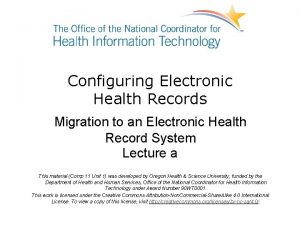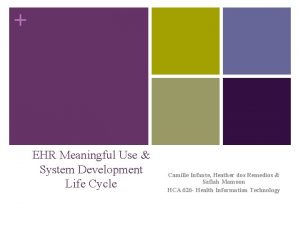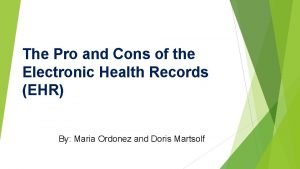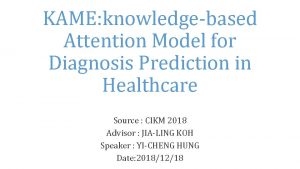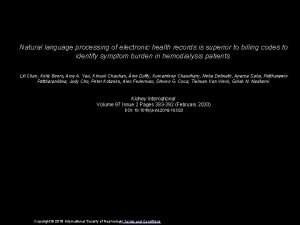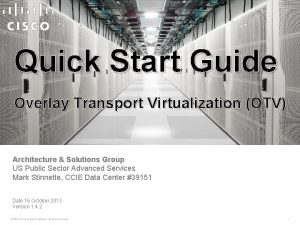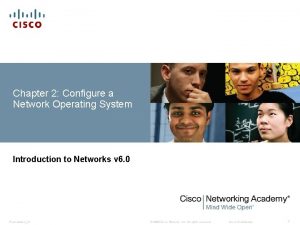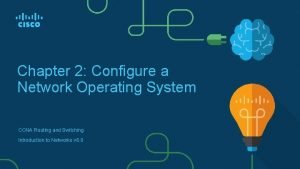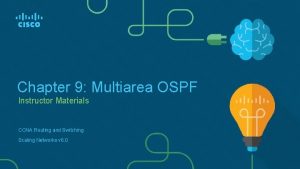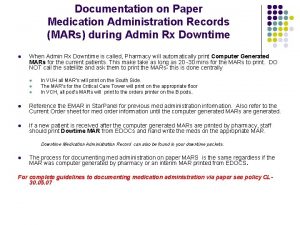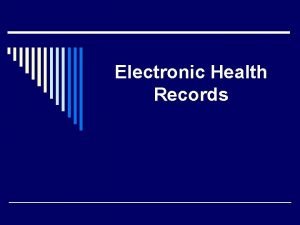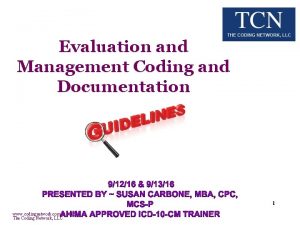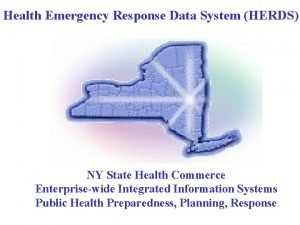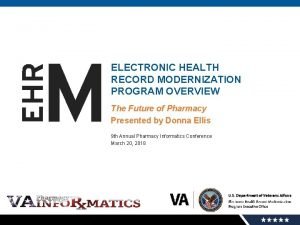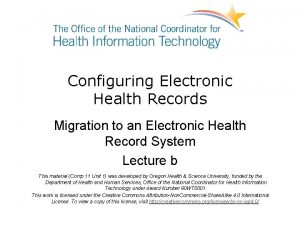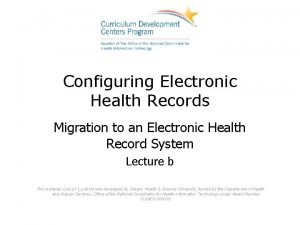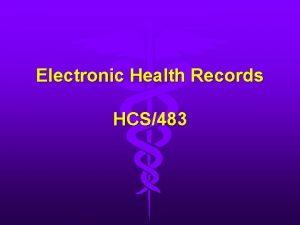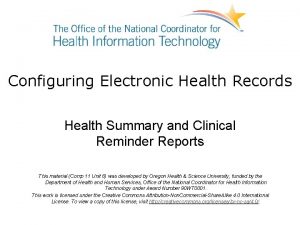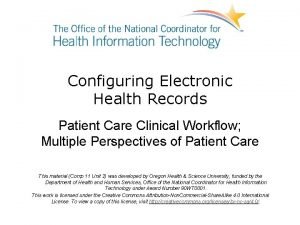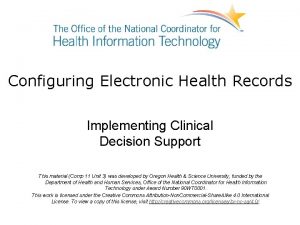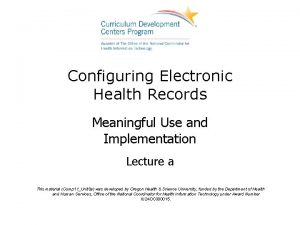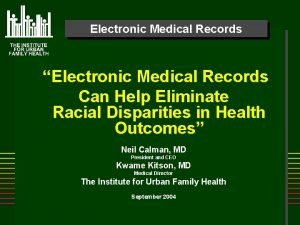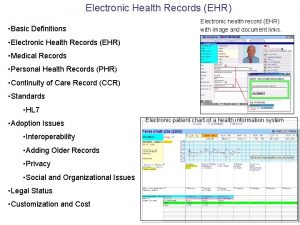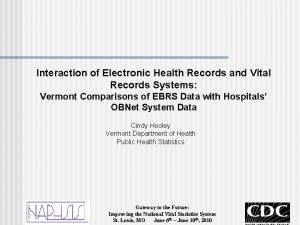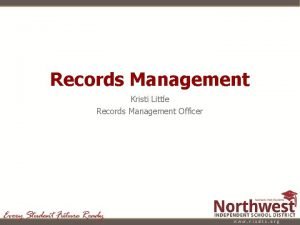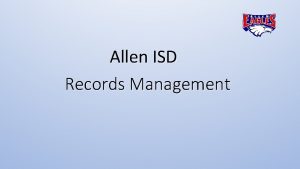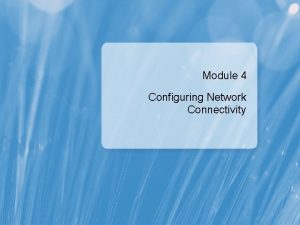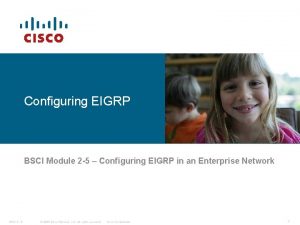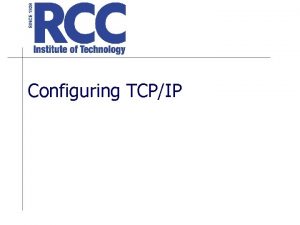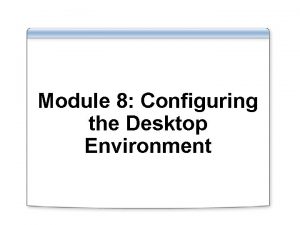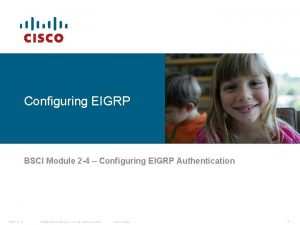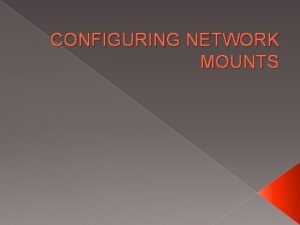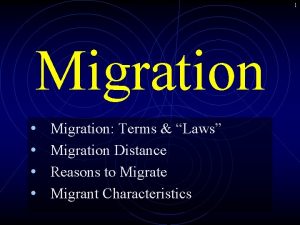Configuring Electronic Health Records Migration to an Electronic


























- Slides: 26

Configuring Electronic Health Records Migration to an Electronic Health Record System Lecture a This material (Comp 11 Unit 1) was developed by Oregon Health & Science University, funded by the Department of Health and Human Services, Office of the National Coordinator for Health Information Technology under Award Number 90 WT 0001. This work is licensed under the Creative Commons Attribution-Non. Commercial-Share. Alike 4. 0 International License. To view a copy of this license, visit http: //creativecommons. org/licenses/by-nc-sa/4. 0/.

Migration to an Electronic Health Record System Learning Objectives - 1 • Describe the process of initial planning, including identification of stakeholders, champions, management and implementation teams, and determining appropriate members for a steering committee (Lecture a) 2

Migration to an Electronic Health Record System Learning Objectives - 2 • Develop a timeline for choosing and implementing an electronic health record, including defining the scope of implementation, budget estimates, and additional critical steps to build a basic strategic plan for implementation (Lecture a, b) 3

Migration to an Electronic Health Record System Learning Objectives - 3 • Develop functional requirements, including a workflow analysis and a gap analysis, and recognizing when to bring in expertise (Lecture a) 4

Migration to an Electronic Health Record System Learning Objectives - 4 • Develop and apply criteria for selecting an appropriate vendor for the electronic health record including (Lecture b): – Generate an RFI/RFP – Select an appropriate system, including utilizing an appropriate ranking model – Generate interface requirements – Compare and contrast EHR solutions (e. g. locally hosted versus cloud solutions) 5

Migration to an Electronic Health Record System Learning Objectives - 5 • Negotiate a contract (Lecture b) • Develop a training plan (Lecture b) 6

Migration to an EHR • Initial planning and project development – Identify of stakeholders – Determine appropriate members for a steering committee – Develop a timeline for selection and implementation – Additional critical steps to build a basic strategic plan for implementation 7

Developing A Strategic Plan • • Help achieve optimal EHR implementation Help team effectively manage process Review the mission and vision Consider the process in deliberate, reasoned fashion • Helps generate realistic, measurable and tactically appropriate goals 8

Guidelines For A Successful EHR Implementation • Develop an effective needs assessment phase • Need to have multidisciplinary buy-in • Determine an appropriate timeline • Plan for and contain costs effectively • Manage people and logistics well • Need to be flexible and troubleshoot issues that may arise 9

Identify Stakeholders • Who are the institutional stakeholders? – Management – Project leaders – Clinicians • Who are the community stakeholders? – Patients – Families – Policymakers – Public health community 10

Build The Team • Develop a project team – Team makes decisions for the organization – Critical to success – Involves careful selection of team members – Needs appropriate leadership • Three broad types of people need representation in the project team – Clinicians – Technologists – Administrators (such as project managers) 11

Identify Key People • CEO who is invested in the process • CIOs and CMIOs with appropriate training and expertise • Physician champions • Project managers • IT professionals with clinical informatics experience • Consultants with additional expertise not available to the organization 12

Select A Steering Committee • This committee has a substantial advisory capacity • May oversee the process • Needs to be interdisciplinary • Members preferably need to have insight into both clinical and technical universes • Needs to be representative of the organization’s culture 13

Conduct A Needs Assessment • Systematic process of determining the requirements for a project • Determine the scope of project • Identify if units in an organization will individually determine their own needs • Focus on internal needs and external factors • Identify the critical aspects of EHR utilization that will drive implementation 14

Determine the Level of EHR Functionality Needed • Tabula rasa or presence of preexisting legacy systems? • What needs to be integrated to the new EHR? • What current systems (hardware and software) are obsolete? 15

Determine The Timeline • What type of implementation is planned? – Big Bang approach – Staged implementation approach • What type of solution is preferable? – Single vendor solution – Best of breed solution • What hardware and software prerequisites must be met? • What people need to be hired/ trained? 16

Develop Functional Requirements - 1 • Certification Commission for Health Information Technology (CCHIT) certified • Infrastructure has an application service provider (ASP) model • Features integrated practice management functionality • HIPAA compliant • Meets meaningful use criteria and is eligible for incentives 17

Develop Functional Requirements - 2 • • • Organization owns and controls EHR data Product integrates with ancillary modules Vendor has proven track record Vendor offers EHR upgrades and support PHR functionality support 18

Workflow Analysis • Evaluates how work is done in an organization • Clinical vs. non-clinical workflows • Can be mapped analyzed • Organizations can modify workflows to be more efficient with new EHR • Used to prepare for changes in workflows that occur as a consequence of implementing new EHR 19

Gap Analysis • Compares “what exists” with “what will be” • Technique for determining the steps needed to transition from the current state to the future state • List current characteristics, future objectives, and map factors required to make transition • Allows organizations to understand define what is need to make the change 20

When To Ask For Help • Internal Expertise – Subject Matter Experts – Technical Experts • External Expertise – Hire consultants appropriately based on organizational needs and internal expertise levels – Learning from other organizations that have gone through selection/ implementation process 21

Additional Critical Steps • Manage expectations of capabilities • Expectations must be calculated realistically • Solicit opinions at each step • Elicit buy-in at all levels of organization 22

• • • Migration to an Electronic Health Record System Summary – Lecture a Developing a strategic plan Identifying stakeholders Building a team Forming a steering committee Conducting different types assessments Determining the level of EHR functionality needed for implementation 23

Migration to an Electronic Health Record System References – 1 – Lecture a References Adler, Kenneth. How to successfully navigate your EHR implementation. Family Practice Management, 2007 Feb; 14 (2): 33 -39. American College of Cardiology. ACC Electronic Health Record Optimal Functional Requirements for Cardiologists. Health IT Committee document. 2009. Drazen EL. How To Use Consultants Effectively. Chapter in Carter JH. Electronic Health Records, American College of Physicians; 2 nd edition (2008). Dykes P, Mc. Gibbon M, Judge D, Poon E. Workflow Analysis in Primary Care: Implications for EHR Adoption. AMIA Annu Symp Proc. 2005; 2005: 944. 24

Migration to an Electronic Health Record System References – 2 – Lecture a References Health Resources and Services Administration. (n. d. ). How can stakeholder involvement be encouraged, and what can motivate pediatricians to adopt and use EHRs? Retrieved from http: //www. hrsa. gov/healthit/toolbox/Childrenstoolbox/Developing. Pediatric. EHRs/what canmotivitatepedittoadoptehrs. html. Mc. Clendon, Kelly. “Purchasing Strategies for EHR Systems. ” Journal of AHIMA 77, no. 5 (May 2006): 64 A–D Mc. Gowan J, Cusack CM, Poon EG. Formative Evaluation: A Critical Component in EHR Implementation. J Am Med Inform Assoc 2008; 15: 297 -301. 25

Configuring Electronic Health Records Migration to an Electronic Health Record System Lecture a This material was developed by Oregon Health & Science University, funded by the Department of Health and Human Services, Office of the National Coordinator for Health Information Technology under Award Number 90 WT 0001. 26
 +electronic +health +records +migration
+electronic +health +records +migration System development life cycle of electronic health records
System development life cycle of electronic health records Pros and cons of electronic health records
Pros and cons of electronic health records Electronic health records
Electronic health records Language
Language Rosemarie rizzo parse theory
Rosemarie rizzo parse theory Otv configuration
Otv configuration Dansguardian https
Dansguardian https Configuring a network operating system
Configuring a network operating system Configure a network operating system
Configure a network operating system Packet tracer configuring multiarea ospfv2
Packet tracer configuring multiarea ospfv2 Paper medication administration record
Paper medication administration record Paper vs electronic medical records
Paper vs electronic medical records Uncitral model law on electronic transferable records
Uncitral model law on electronic transferable records Electronic medical records
Electronic medical records Electronic medical records
Electronic medical records Scrip exchange
Scrip exchange Electronic field production examples
Electronic field production examples Herds nys
Herds nys Electronic health record modernization services
Electronic health record modernization services Role and responsibility of occupational health nurse
Role and responsibility of occupational health nurse National program related to child health and welfare ppt
National program related to child health and welfare ppt Louisiana department of health health standards section
Louisiana department of health health standards section Differences between health education and physical education
Differences between health education and physical education Whole health circle of health
Whole health circle of health Health and social care component 3 health and wellbeing
Health and social care component 3 health and wellbeing Health promotion and maintenance
Health promotion and maintenance
